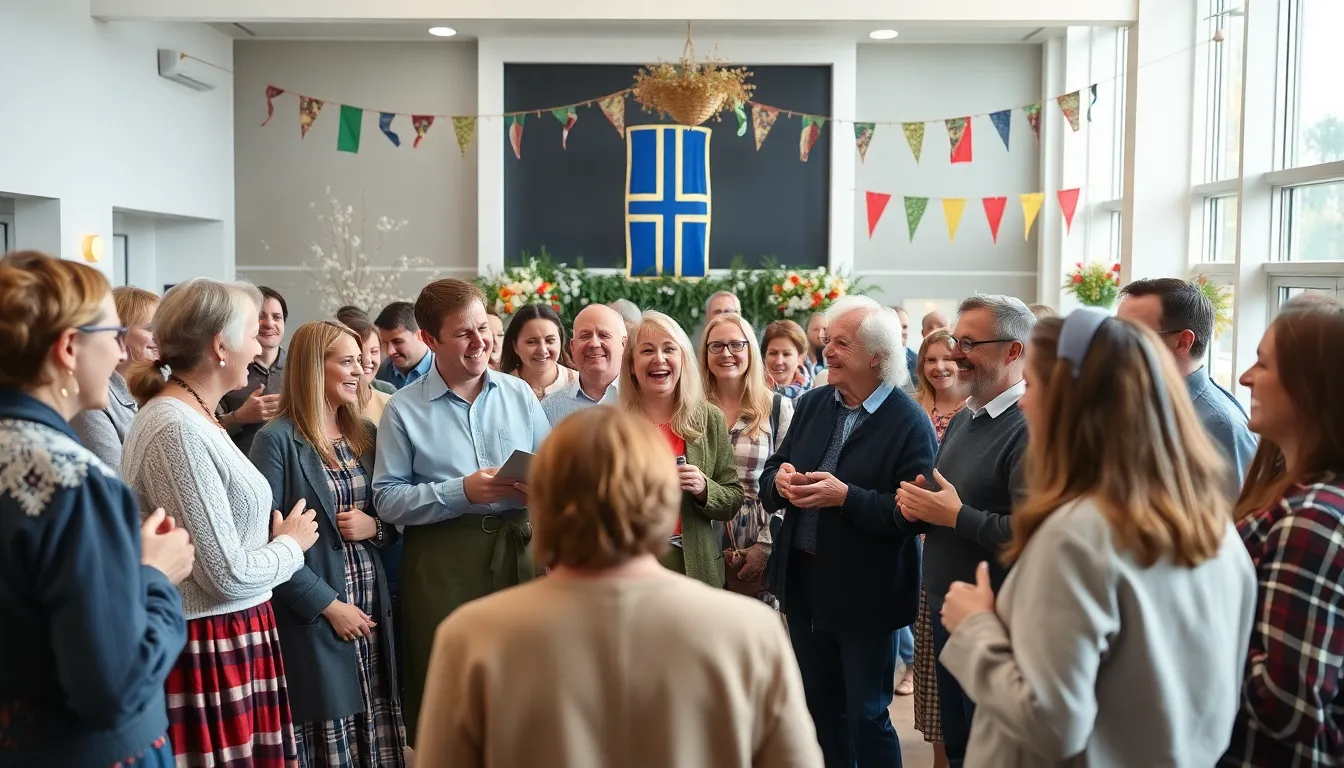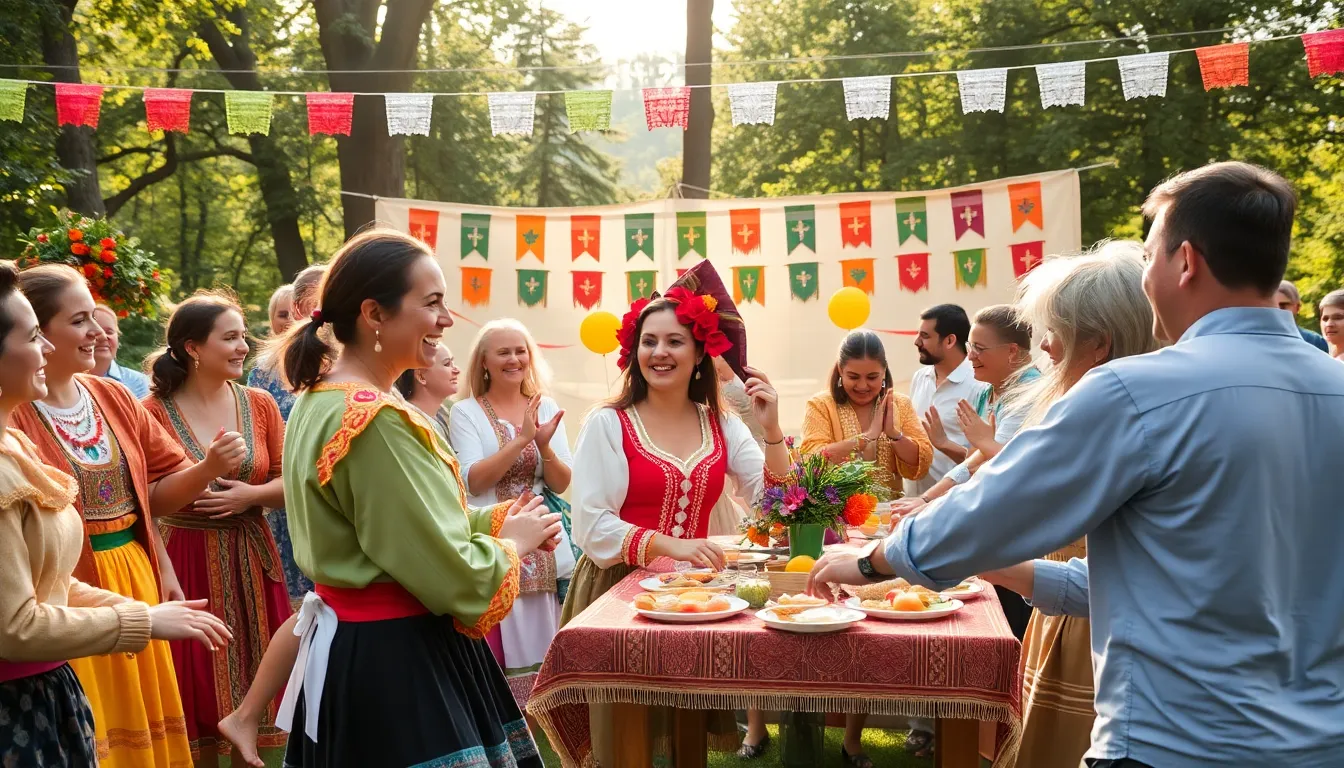Ever heard of Kläntür? No? Well, you’re in for a treat. This intriguing concept isn’t just a sly Scandinavian secret or a new plant species, it’s a rich tapestry of culture and history just waiting to be unraveled. Imagine a journey through time where traditions collide with modernity. Sounds fun, right? But don’t worry, it’s not all stuffy history and dry facts. Buckle up as we jump into what Kläntür really is and why it deserves a prominent shelf space in the bookshelf of your mind.
Kläntür

Kläntür can be described as a vibrant cultural phenomenon, encompassing a unique blend of traditions, rituals, and beliefs that have evolved over generations. At its core, it represents more than just a word or a concept: it encapsulates a way of life for many. It is often associated with the celebration of nature’s beauty and the changing seasons, particularly in various Scandinavian contexts.
To understand Kläntür fully, one must appreciate the intricacies of its local nomenclature and traditions. In essence, it serves as a bridge connecting individuals to their heritage, encouraging them to reflect on their past and embrace the present.
Historical Context of Kläntür
Delving into the historical context of Kläntür unveils a narrative rich with folklore and ancestral practices. Originating in regions where the harshness of winters was a significant influencing factor, Kläntür reflects the resilience and adaptability of communities facing these challenges.
Scholars believe that early mentions of Kläntür can be traced back to ancient agricultural calendars, where it signified pivotal moments in the farming cycle. Seasonal festivities honoring the earth’s bounty became intertwined with familial gatherings, reinforcing community bonds and ensuring the passage of traditions through oral storytelling.
Archaeological findings reveal artifacts that corroborate these beliefs, and texts from early historians describe festivities that have been preserved over centuries.
Cultural Significance of Kläntür
Culturally, Kläntür resonates deeply within the hearts of many individuals. It embodies a sense of community, marking the intersection of individual identity and collective memory. Through music, dance, and art, Kläntür embodies the essence of folk traditions that have stood the test of time.
The stories shared during Kläntür celebrations provide a sense of continuity, linking generations together. Young ones hear legends from their grandparents, learning not just about their past, but also about their place in a larger narrative. This cultural significance is particularly palpable during festivals where participants don traditional attire, engaging in activities that have remained largely unchanged for decades.
The emotional connection formed during these celebrations cultivates pride and individuality, which many embrace as a core aspect of their identity.
How Kläntür Is Celebrated Today
In contemporary settings, Kläntür celebrations have become increasingly inclusive, welcoming individuals from diverse backgrounds eager to learn and participate. Modern festivities often blend traditional customs with innovative expressions of culture, enhancing the vibrancy of the celebrations.
Activities typically include everything from communal feasts featuring local cuisines to workshops fostering traditional crafts. The rise of digital media has even allowed for a broader audience: streaming events and social media presence create a virtual community threaded together by shared histories.
Also, local governments and cultural organizations actively promote Kläntür events, recognizing their value in preserving and popularizing cultural heritage. This dual sense of tradition and innovation helps sustain interest and participation, ensuring that Kläntür remains a lively component of both community and individual identity.
The Variations of Kläntür Across Different Regions
The beauty of Kläntür lies in its regional diversity. Different regions have adopted the fundamental concept and adapted it to their unique environments and cultural narratives. For instance, while one area may host a massive gathering celebrating harvest time, another might focus on winter solstices, each retaining a distinct flavor.
In Iceland, you might find Kläntür celebrated with lively concerts and storytelling sessions that draw on local myths. Conversely, in Finland, the emphasis may be placed on community games and outdoor activities, showcasing the region’s stunning natural landscape. The eclectic expressions of Kläntür in different locales illustrate how cultures interpret their connections to history and nature.
Future of Kläntür in Modern Society
Looking ahead, the future of Kläntür seems promising. As society progresses, so does the opportunity to reimagine and revitalize this cherished tradition. With modern technology bridging gaps, Kläntür might exploit this to infuse innovation while respecting its roots.
Younger generations are increasingly taking the helm, experimenting with new forms of art, music, and storytelling to reintroduce Kläntür to broader audiences. Efforts are underway to digitize historical records and narratives, preserving the essence of Kläntür for future exploration.
Also, partnerships with educational institutions can cultivate awareness and appreciation among youth, ensuring that culture continues to thrive. The potential for Kläntür to blossom within an interconnected, global context is an exciting prospect that stands at the forefront of cultural evolution.




